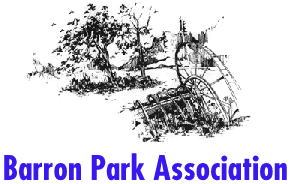

An epidemic is disease that quickly and severely affects a large number of people and then subsides. A pandemic is a widespread epidemic that may affect entire continents or even the world. A most relevant modern example of a pandemic is the 1918 influenza pandemic ("the Spanish flu") that killed 20-40 million people worldwide, including 675,000 in the United States1. Similar, but much less devastating influenza pandemics occurred in 1957 and 1968.
Organizations such as the World Health Organization2 are sounding the alarm that the world may now be facing an influenza pandemic similar to 1918. In 2004, large parts of Asia experienced unprecedented outbreaks in poultry of a highly pathogenic avian influenza, caused by the H5N1 virus. In cases of close proximity between poultry and humans, the virus was passed from the birds to humans, with a very high fatality rate in humans. The concern is that this H5N1 virus could mutate to a strain easily passed from human to human and then would be spread quickly around the world by air travelers, causing an influenza pandemic similar to 1918. A vaccine could not be developed until after the mutant strain appeared.
What is the likelihood of this frightening scenario? Participants in the Pandefense 1.0 National Avian Flu Conference in November 20053 estimated the probability that the H5N1 virus would mutate within three years into a strain that could spread efficiently by human-to-human contact. Nineteen medical participants estimated a 15% probability, and seventeen non-medical participants estimated a 60% probability. Either estimate is a cause for great concern.
The participants in the Pandefense 1.0 National Avian Flu Conference also estimated the probability of the U.S. having adequate stockpiles of vaccines or antiviral drugs to prevent a pandemic within the next three years. The estimate by the non-medical experts was 15-30%, whereas the estimate by the medical experts was only 1%
An influenza pandemic similar to 1918 is thus probable within the next few years. If this happens, our public-health resources in the United States will be overwhelmed. With present resources, there will be desperate shortages of medicine, hospital beds, physician and nursing care, mortician services, etc. Accordingly, individual households will be pretty much on their own to cope with their health needs. Public services —at any level —will not be there to help you.
Furthermore, the sociology of response to an influenza pandemic is 180o opposed to the sociology of response to a major earthquake. For an earthquake, the mantra at all levels is "mutual aid". As individuals, we take care of our families and then help our neighbors. As neighborhoods and cities, we expect aid and assistance from other counties and states not affected by the earthquake. But with an influenza pandemic, mutual aid is just not going to happen; every neighborhood, city, county and state will be affected. Instead of increasing personal contacts with the community in response to an earthquake, the appropriate approach to an influenza pandemic will be to restrict oneís public interaction to a minimum. Indeed, there well may be mandatory school closures, restriction of public transit, and other quarantine measures to slow the spread of the disease.
As individuals, our first responsibility will be to protect ourselves and our families from infection, and, if infected, prevent the flu from spreading to others. We can be prepared to do this by some very simple measures, as recommended by the Santa Clara County Public Health Department4 in the a pamphlet distributed to Palo Alto residents with their utility bills. Much of this advice is similar to preparations we all should be taking for an earthquake (food, water, etc.), but there are some important flu-specific measures:
The most important of these measure is extreme sanitation. Paramount is an adequate supply of face masks and plastic gloves to protect the household, especially if there are sick family members. Every sick person should wear a mask whenever caregivers are near, since the flu virus is spread most readily by droplets expelled into the air by sneezing or coughing. Healthy people should wear masks also, both to protect themselves from airborne droplets and to remind themselves not to touch their mouth, nose, or eyes with their hands. Disinfectants (e.g., chlorine bleach) are essential for any surfaces that may become contaminated.
Other important flu-specific measures include (1) a two-week supply of prescription medicines, (2) two-weeks worth of ibuprofen or acetaminophen for each person in the house for fever and pain, (3) two weeks supply of cough medicine, and (4) rehydration solution (Pedialyte for kids and Gatorade or a solution of 4 cups water, 2 tbsp sugar, and ½ tsp of salt for adults and teens). Note that in a flu pandemic, distribution and availability of pharmaceutical and therapeutic supplies are likely to be severely compromised.
The bottom line is that an H5N1 flu pandemic is certainly possible in the next few years. If this happens, public-health resources will be overwhelmed, and individual households will have to protect themselves against exposure and provide virtually all care for the sick. The necessary household preparation for an H5N1 flu epidemic is simple and inexpensive. All of us should plan to care for our households and should stockpile the essential supplies.